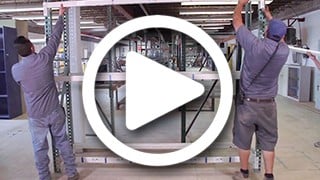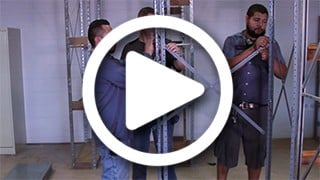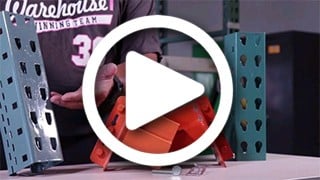Drive-in Storage Systems: How Do They Work?
Drive-in pallet storage can be a great option for some businesses. However, while it is suitable for many warehouses, those that are short on space or have a larger variety of inventory may not benefit from this storage type. Below we will explore the advantages and disadvantages of drive-in storage systems, and describe some alternative options for those whose storage needs will not fit well with a drive-in unit’s capabilities.
Advantages of Drive-In Units
- Accessibility. When considering the purchase of a drive-in or drive-through unit, one of the main benefits is ease of access to inventory. If your inventory is standardized, meaning that all pallets contain basically the same products, this system makes it easy to access your property from the comfort of a forklift.
- High Storage Density. For companies whose pallets contain mostly the same merchandise, drive-in units can be a great way to maximize space. While these units do require uniform pallet sizes, if the specifications are met they can hold a much greater volume than other types of racking.
- Lower Cost. Because of their straight-forward design, drive-in units are often more cost effective than other types of racking.
Disadvantages of Drive-In Units
- Less Ability to Reach All Pallets. If your inventory is varied, these static storage units may not be for you. Reaching pallets in the back of a drive-in unit can be a hassle and often requires moving other pallets to access those buried deeper in the unit.
- Damage is More Common. This type of unit operates on the assumption that forklifts and other machinery will be used to place and remove every pallet. This means the opportunity for the rack to sustain damage is significantly higher than with racks whose inventory is placed at a short range or by a manually operated lift.
Drive-In Unit Alternatives
- Flow Racks. These racks can work well with storage that operates on a first in, first out method. When each piece is placed on the rack, gravity pushes all other pieces toward one side so the first pallet stored is the most accessible.
- Push Back Racks. Much like flow racks, these racks allow more of the user’s inventory to be accessible. However, they differ from flow racks in that their loading and unloading spaces are both located in the front of the unit.
For more information on different racking systems, contact the professionals at Warehouse1.



